Bama Local Government In Northeast Nigeria Shrinks And Stretches As Boko Haram War Lingers
-
 Mansir Muhammed
Mansir Muhammed
- September 10, 2022
- 11:59 am
- 3 Comments
Like the rest of Borno State, Bama has been shaped by the Boko Haram insurgency over the last decade. In many parts, whole communities have disappeared off the map, while some have been reshaped.
Listen to this article
0:00 0:00As the Boko Haram insurgency raged between 2013 and 2014, people fled their homes searching for safety. Bama, a town in Borno state midway on the road between Maiduguri and the Cameroonian border, was no different.
Over the course of the war on insurgency, people have started to return to some communities. But in Bama, many of the communities people fled from no longer exist. The conflict has permanently altered the landscape and economy of those communities.
Although the Nigerian Army entered Bama in 2015, forcing the terrorists out and reclaiming the local government area, satellite data shows that some of these communities never returned to what they once were.
Andara community in Bama suffered after Boko Haram entered it. The farming community consisting of numerous households across its landscape had a rich agricultural economy and a modest population.
Today, using satellite data, Andara has vanished from the landscape.

Satellites: Andara 2019 & 2022
Boko Haram invaded the town in 2014, and the villagers fled their homes, making the place a ghost town since then.

Satellite: Andara/2013

Satellite: Andara/2013
Before Boko Haram entered Andara, the village had about 150 households. The farming economy consisted of about 381 acres of cultivation, with farmland.
Over time, following the exodus that succeeded Boko Haram’s entry, the buildings in Andara began to crumble, exposing the building blocks of each structure, while some simply vanished.
The once thriving farming economy turned into a landscape of untamed scrub-forest and grassland as the cultivated fields disappeared into these growing wildlands.


Andara is not alone in this forced community disappearance. As seen in the interactive map below, several other communities in Bama Local Government Area (LGA) followed suit, including dozens of villages and localities near the Nigeria-Cameroon border.
Life returns to some communities
While some communities disappeared, some have seen a resurgence of human life. Nguro Soye and Banki are two such communities. But it has been a rocky climb over the past 10 years.

Satellite imagery of Nguro Soye in 2021
In this small community of Nguro Soye, new buildings rise above the foundations of other developing constructions, while fresh cultivation also booms.

Satellite imagery 2021/ Nguro Soye cultivations
This is the Nguro Soye of today, however, turning back the clock, we can see how this little settlement used to be a ghost town before the renewed development.

Satellite imagery of Nguro Soye in 2018
Shortly after the Boko Haram invasion, the town was deserted, with several buildings reduced to foundations. Bare lands and weeds reclaimed the fields of cultivation and parts of the village itself.
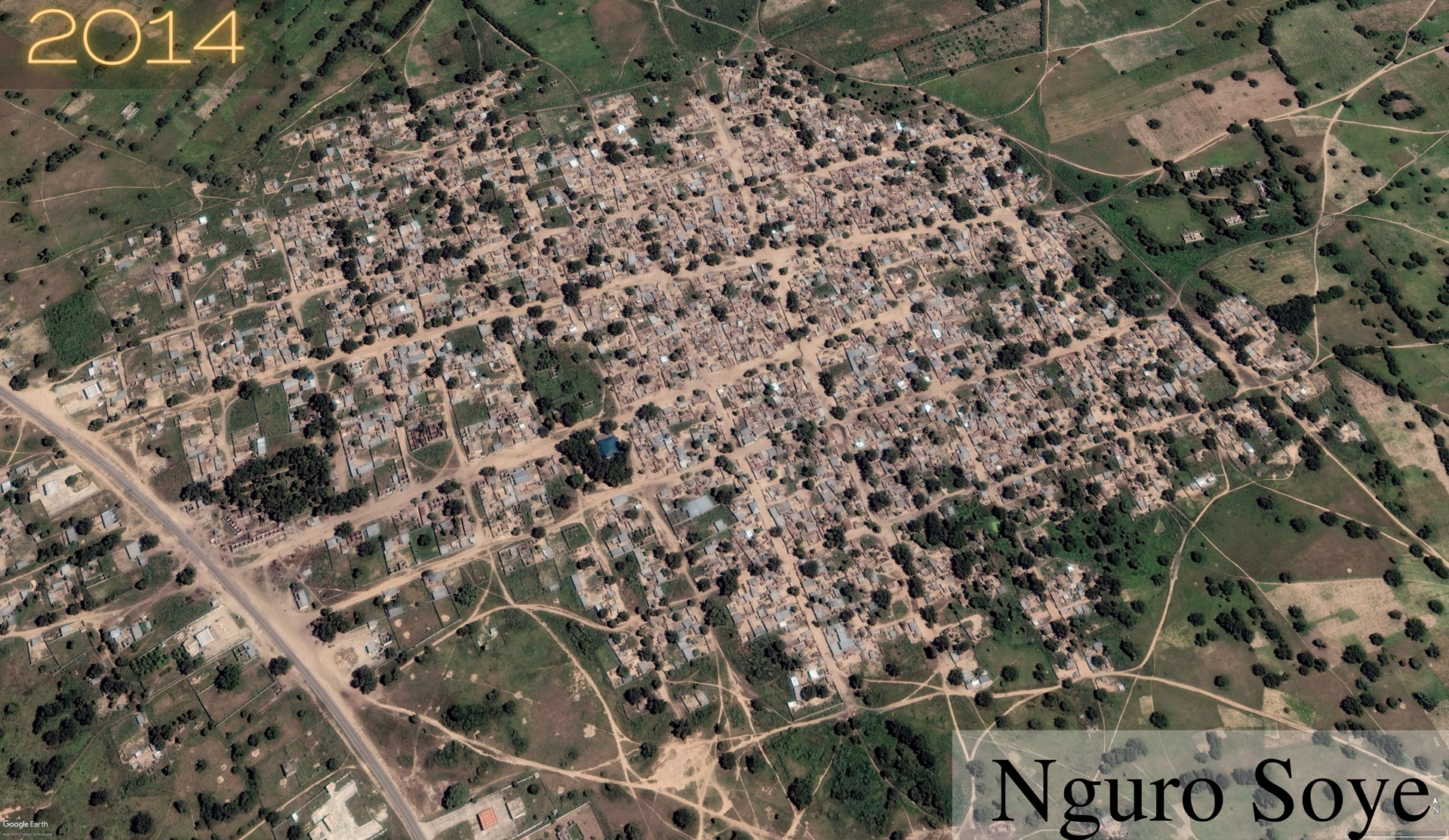
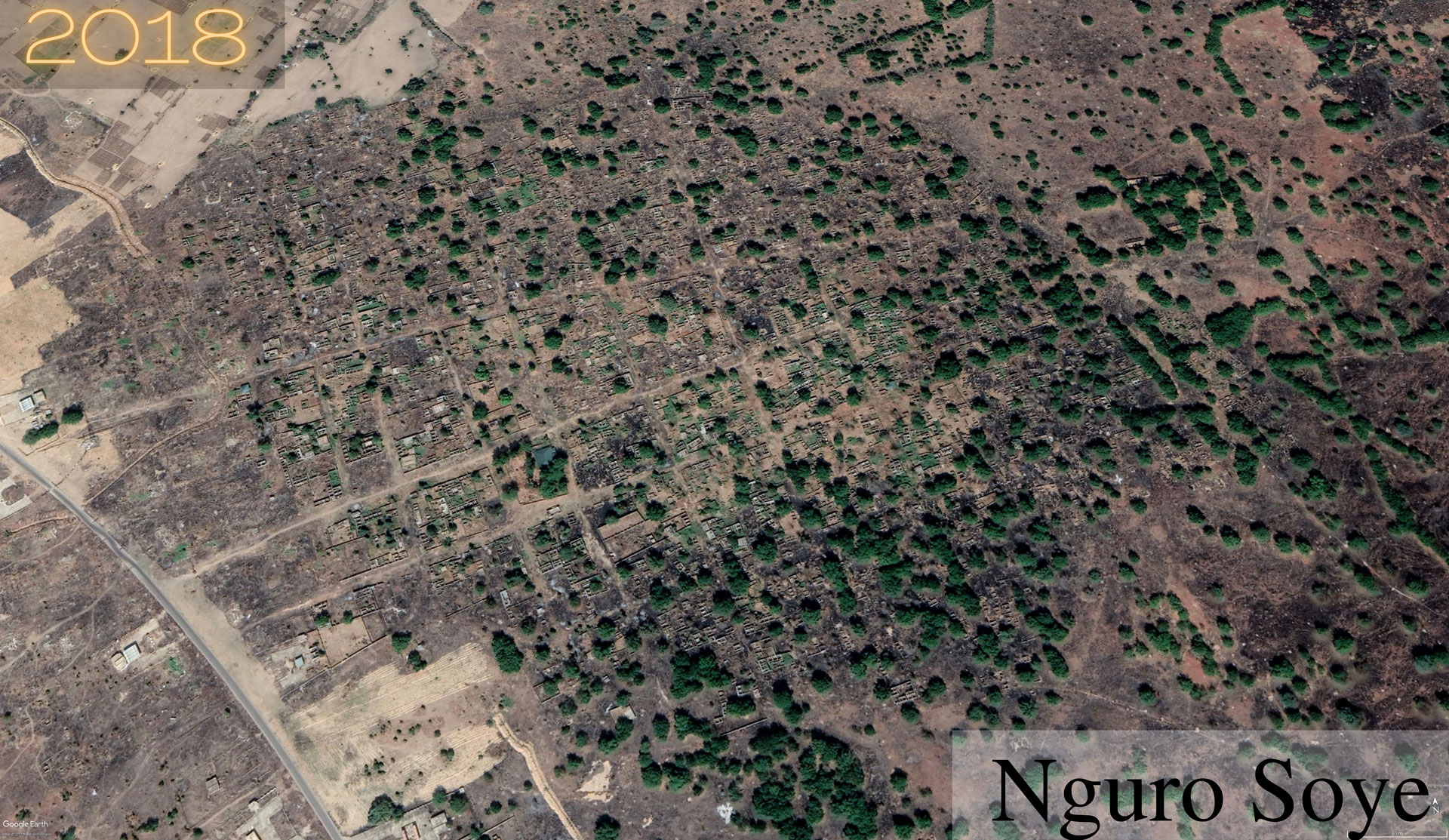
In 2021, however, the Borno state government initiated a project to renovate about 1,500 new structures in the village. In 2014, there were over 600 households in the village. Recent data from available satellite images of the area show that more than 140 structures have been built across the community by 2021.
The future of trade at Banki Junction
The tragedy of displacement spreads far and wide, but worse is the tragedy of economic displacement. Banki, a major economic route, is an example of this.
Banki junction, an economic centre through the Maiduguri-Banki road, near the border between Nigeria and Cameroon, is where trade occurs between sellers and buyers from both countries. However, for nine years, the road was closed by the state due to insecurity. The Banki road is one of the primary infrastructures facilitating the trade economy in the area.
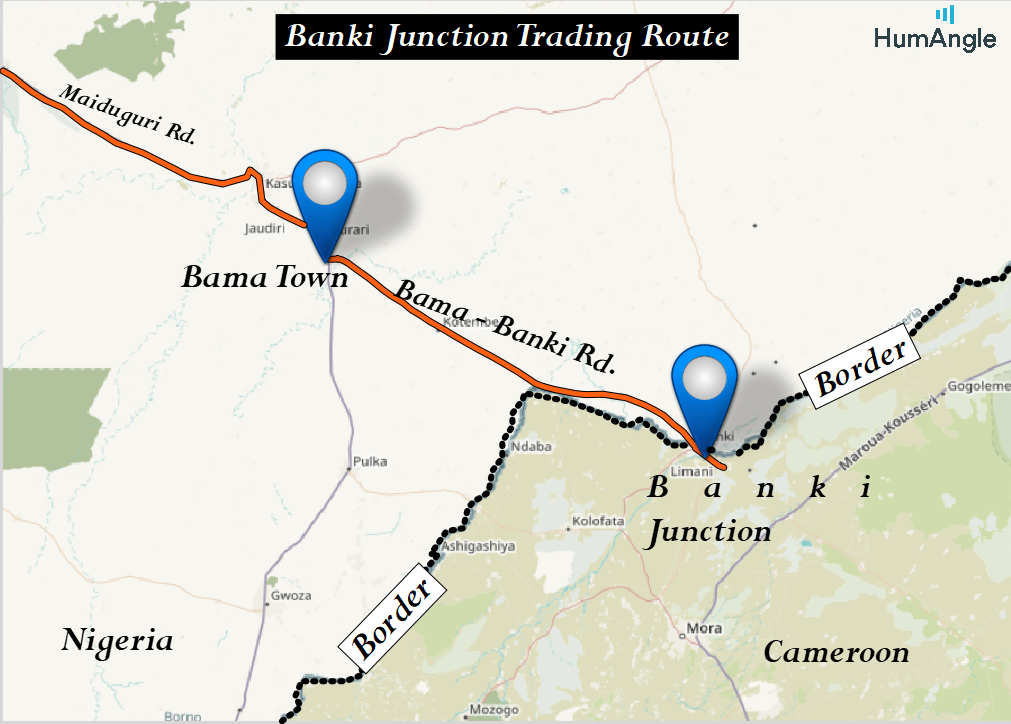
Banki is about 120 km from Maiduguri, right on the Nigeria-Cameroon border, where it connects to markets across the border communities.
According to reports, some drivers ply the road 70 to 80 times daily. But, all economic travels stopped when Banki became a ghost town. Today, it is another resurging community, home to IDPs and resettlers.

Satellites of Banki in 2022
Before 2018, it was a complete ghost town.
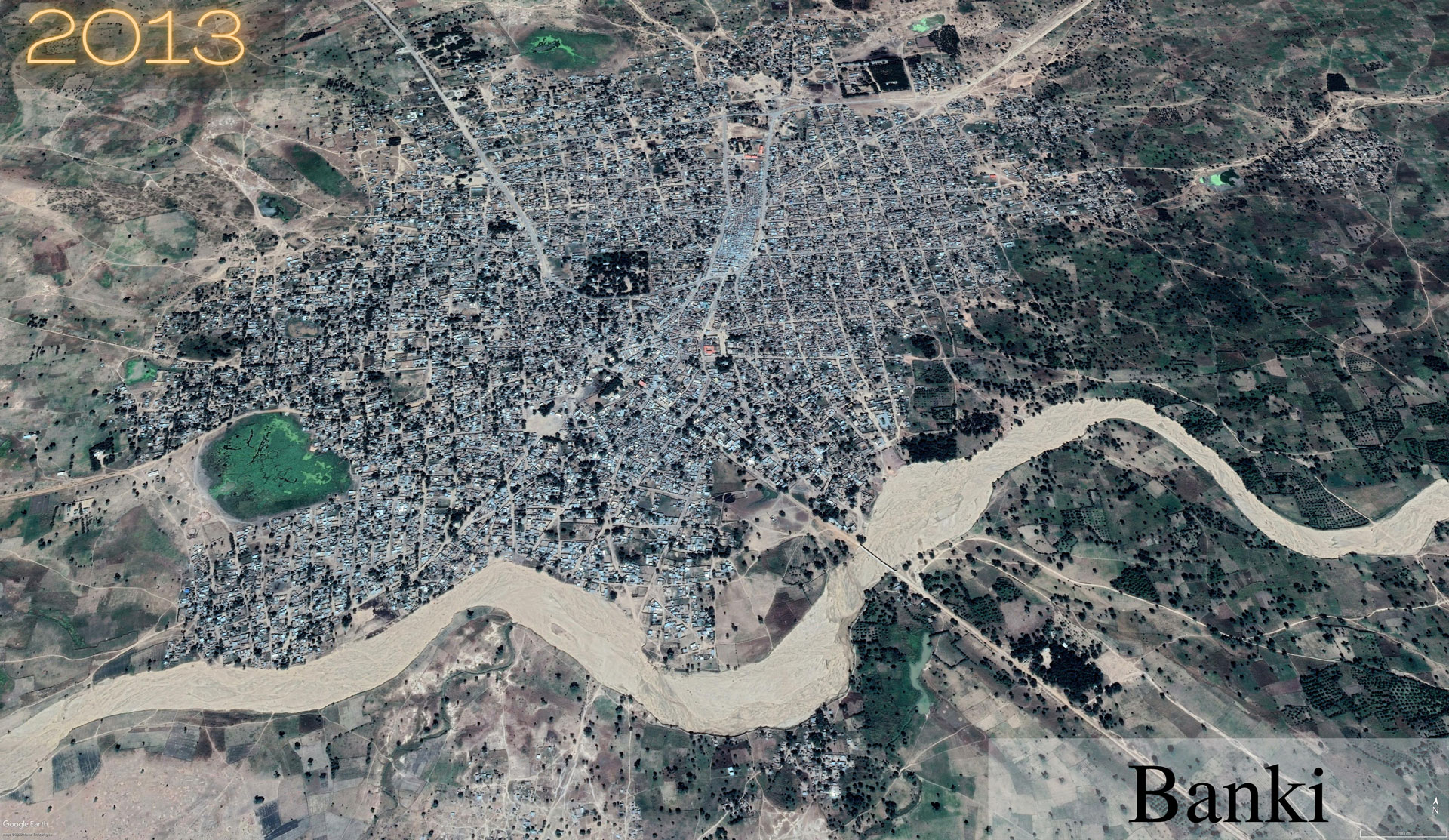
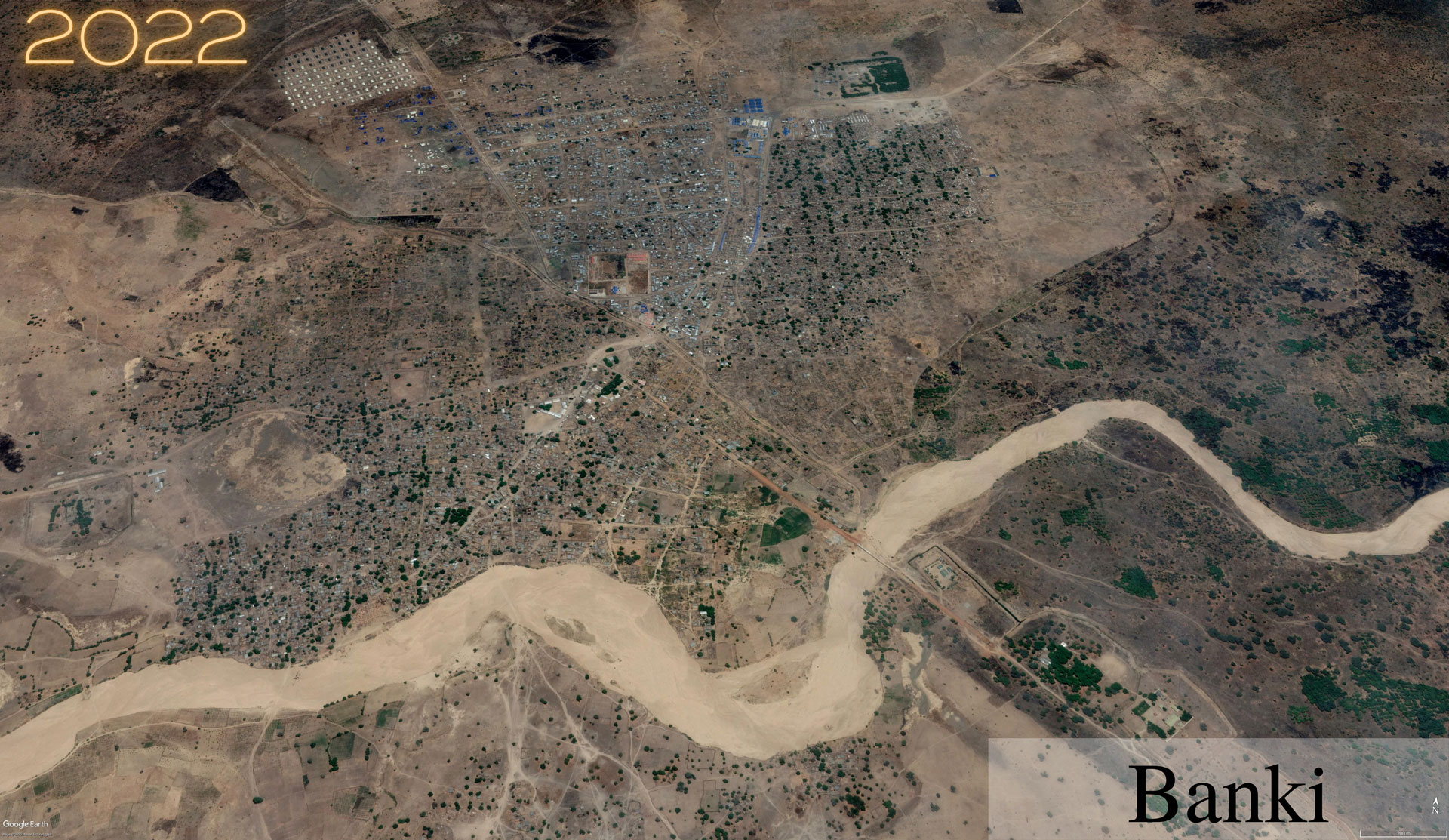
Satellite image before and after of buildings in Banki in 2013 and 2022

Farms in Banki in 2022, 2015 and 2013
With life now returning to Banki, it has become a home to IDPs and resettlers. The locals wasted no time in making themselves at home, as seen from the cultivation of nearby lands. And with the reopening of the Banki road and the restoration of the Banki Free Trade Zone, the future is looking good for trade in the area.
Since the Nigerian government recaptured it in 2015, Bama town has become a haven for people who have been displaced from all over the Northeast.
As camps are closing all over Borno State, the IDPs are given the option to either move back home (for those who can) or be relocated to one of the government resettlement sites. For most people, Bama town is the only option, as their homes remain barren.
All satellite data used in this report were sourced from Google Earth Pro and analysed by HumAngle.
Credits
Interactive Editor/Producer: Muhammed Akinyemi
Editing by ‘Kunle Adebajo, Andrew Walker, Hauwa Shaffii Nuhu,
Design Team: Attahiru Jibrin, Khadija Gidado
Cover Illustration by: Akila Jibrin
No part of this publication may be reproduced, distributed or transmitted in any form or by any means without proper attribution to HumAngle, generally including the author’s name, a link to the publication and a line of acknowledgement.




3 Responses
Mine is to ask for permission to republish this details on this report for building resilience in the people. As we run Bama LG Media for promotion of the town, we see this as a useful source. However we would credit Humangle as reference when using
Hello Umar, thank you for reading our work. You have our permission to republish the report’s findings and to reference it in further works — as long as full attribution is given and all adequate references are made. We will be glad to see the result of such use when it is available for public use/consumption.
Honestly, I have to give you guys kudos. I am a senior journalist and development expert, this is the best journalism in that sector that I have seen so far. Thank you for all you do, we need to ensure this fantastic work gets to more people. Well done guys and ladies.